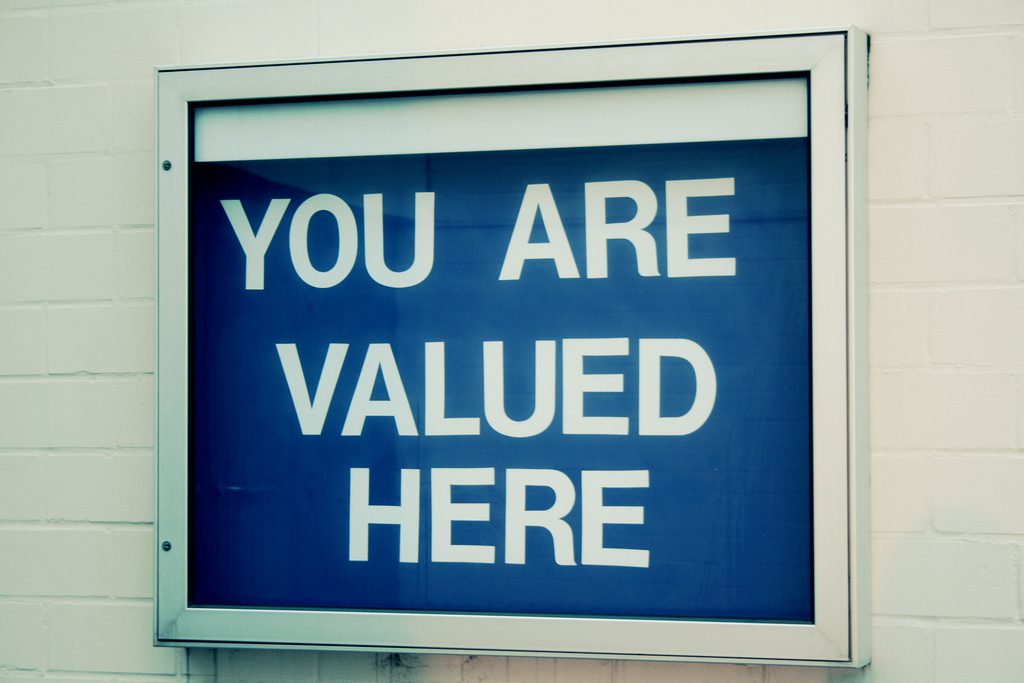Today we continue our series of regular posts on the Trellis blog for science community managers interested in diversity, equity and inclusion. This installment was authored by Marsha Lucas, Society for Developmental Biology. Additional series coordinators are Jennifer Davison, Urban@UW, University of Washington, Josh Knackert UW-Madison Neuroscience Training Program, and Rosanna Volchok, The New York Academy of Sciences. You can find all of the posts in the series here.
Community managers are in a unique position to help foster diversity, equity, and inclusion within their communities. One of the tools at their disposal is the establishment of community guidelines.

Image credit: https://www.flickr.com/photos/mootreelife/5364190913/
Community guidelines set the tone for community interactions by clearly stating what the community is about and what it values. They lay out expectations for community members and consequences for failing to meet those expectations. This is the perfect place to codify an organization’s beliefs around diversity, equity, and inclusion, and highlight behaviors that cultivate creativity, productivity, and collaboration.
It is most effective if guidelines are created early in a community’s life cycle before a conflict arises. However, it is completely acceptable to create or revise community guidelines as times change, or in response to an issue that bubbles up in order to move your community in a more positive and inclusive direction.
Below are a few points to keep in mind when drafting community guidelines to ensure they wholly represent your community.
Reach out to the community
If at all possible, community managers should seek input from community members when crafting community guidelines. Involving the community in the formation of its guidelines gives members ownership over the process and a voice in what they want their community to be. In particular, reach out to folks from underrepresented groups you wish to fully envelop into your community. What are their barriers to engagement? How might you create a space that mitigates those barriers?
Consider feedback you have received from program evaluations or post-meeting surveys. Does that feedback hint toward an underlying issue that needs to be addressed? Consider how making changes to your guidelines may address them.
Frequently there are behaviors (often unintentional) exhibited by members within a community that create divisions and block progress. A simple nudge and awareness of this behavior can completely transform an interaction. For example, Loyola University Chicago invited faculty, staff, and students to participate in focus groups to assess and improve the university’s climate with regard to diversity, inclusion, and equity. In their community guidelines they ask participants to “be conscious of body language and nonverbal responses” during their group discussions. We all respond to nonverbal cues from our environment and awareness of our own body language is important for fruitful dialogue.
Explicitly state your values
If you value diversity, equity, and inclusion in your community, explicitly state that in your guidelines. No need to mince words. The Ubuntu Community Code of Conduct says:
“We gain strength from diversity, and actively seek participation from those who enhance it. This code of conduct exists to ensure that diverse groups collaborate to mutual advantage and enjoyment. We will challenge prejudice that could jeopardise the participation of any person in the project.”
Mozilla opens their Community Participation Guidelines with:
“The heart of Mozilla is people. We put people first and do our best to recognize, appreciate and respect the diversity of our global contributors. The Mozilla Project welcomes contributions from everyone who shares our goals and wants to contribute in a healthy and constructive manner within our community.”
There is no doubt about the kind of communities both Ubuntu and Mozilla wish to create. Diversity, equity, and inclusion are front and center.
Describe the behavior you want to see
Now that you’ve stated that you value diversity, equity, and inclusion, describe the behaviors that build that within a community. Mozilla does this throughout their guidelines. One of their expected behaviors is to “Be Inclusive.”
“Seek diverse perspectives. … Encourage all voices. Help new perspectives be heard and listen actively. If you find yourself dominating a discussion, it is especially important to step back and encourage other voices to join in.”
This guideline asks community members to self-reflect and actively seek out perspectives different from their own. These are behaviors that foster inclusion.
The group 500 Women Scientists is committed to building an “inclusive scientific community dedicated to training a more diverse group of future leaders in science.” Their guidelines are in the form of a pledge in which they ask community members to “identify and acknowledge structural inequalities and biases that affect the potential of all individuals to fulfill their goals.” In other words, members should act locally to root out discriminatory practices wherever they are.
In the Community Roundtable blog, Shannon Abram suggests using positive language whenever possible to encourage desired behavior. A list of things people should do is more desirable than a list of things not to do.
Have a policy in place to handle code of conduct violations
Finally, make sure community members know how to report violations of the code of conduct. They should also know that there is a policy in place to caution or in extreme cases, remove community members who fail to respect the principles that create a more diverse, equitable, and inclusive community.
Community guidelines allow community managers to set expectations clearly, which can help establish norms of interaction and behavior that will support diversity, equity and inclusion. A foundational step in the community-building process, community guidelines can, well, guide not just the behavior of community members, but also the content and the programming that you as a community manager develop. They can serve as guard rails and a lighthouse to which you can look as you make the journey toward managing a more inclusive community.